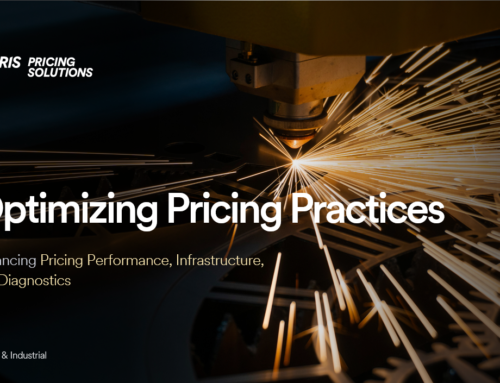By Paul Hunt, Chairman at Pricing Solutions
As a Private Equity investor in restaurants, the goal is to maximize firm value to generate a significant return on investment. Yet many PE firms bring outdated revenue optimization strategies to the restaurant businesses they acquire, hindering value creation.
A Broken Pricing Model: Over-reliance on Historical Price Data
Menu pricing strategies have evolved rapidly in the last five years. Franchisees and investors are nervous about restructuring and repricing their menus, which can be risky as I’ve discussed in a previous article.
Technology and the ease of acquiring and applying data science to large amounts of POS transaction data have brought historical pricing analysis into the mainstream. Approximately 50% of restaurant chains are now doing historical data analytics. This is a good thing. There is tremendous potential value in leveraging historical transactional data and any PE investor not doing so today is leaving a big opportunity on the table.
But, many pricing experts will tell you this historical POS transaction data “contains all the information you need” to optimize menu pricing. “Just provide us with the data and we’ll give you the right answers,” they say.
This is wrong…and very dangerous for a restaurant business.
Price is a lagging indicator, not a leading one. Relying exclusively on historical transaction data paints an incomplete (and potentially misleading) picture that can result in loss of market share and revenue.
The Past is Only Part of the Future for the Restaurant Investments
Market disruption in the restaurant industry is significant. New restaurant concepts, web- and app-based sales channels, minimum wage increases, value menu wars and a host of other forces are driving consumer decisions. Relying only on the historical data to drive price optimization is like eating only spinach to grow your muscles. It might work for Popeye but not everyone else.
Let’s look at a real-life situation. The transactional data of a very successful restaurant client of ours indicated that fries had a very low price elasticity. But after undertaking some competitive benchmarking we found our client to be well beyond the prices of key competitors. The reason that our client had a low elasticity was that they were priced out of the market and the few people who bought fries continued to buy fries. What they did not realize was that by lowering their price of fries to match key competitive benchmarks they could substantially grow that business which is exactly what they did!
So what is the best way forward? If transactional data is of great value, but insufficient then the key must be to augment the transactional data with other data sources. At Pricing Solutions, we call this “triangulation”
The only way to generate a substantial increase in investment value through pricing is to use a variety of measures that include historical transaction data.
Comprehensive Pricing Analysis Works
As a restaurant investor the way to increase the business value significantly is to:
- Increase guest counts
- Increase effective prices by delivering higher perceived value
- Build your pricing strategy around a multi-channel sales model (in-store, web, app)
- Increase margin and market share by offering the right menu items, at the right price and time, to the right customers
- Increase profits at the individual restaurant AND group levels
- Navigate and leverage the disruptive forces affecting restaurants to your advantage
When building a pricing strategy, it is essential to fully account for the interrelationships between menu items, customers’ perceived value of existing and new offers, and your competitors’ offers.
You must avoid “buying margin” through price reductions at all costs. To do this, you need to discover customer value points and convert those into well-priced menu items and bundles. This allows the business to maintain higher effective prices and grow profitably.
The Dimensions of World Class Restaurant Pricing
To truly build an effective restaurant pricing strategy requires analyzing multiple historical and forward-looking dimensions. I describe a world-class four-stage pricing strategy for restaurants in this article here.
Generally speaking, the best approach is to:
Leverage Transactional Data — this gives you the baseline price-volume relationships between stable menu items and bundles, and discover price elasticity dynamics to uncover potential price increases
Conduct Primary Consumer Research — this uncovers psychological price thresholds and allows you to understand the perceived value of new menu offers
Do Competitive Benchmarking — this helps build business rules that ensure you remain competitive in the marketplace
Leverage Mobile and Web App Data — this provides a cross-channel view at buying behavior, customer loyalty, up-sells / cross-sells, and customer segmentation dynamics
Once these dimensions are analyzed, the data can be combined to create a repeatable high-impact process that drives profitable growth
A Tangible Restaurant Example
For a recent quick service restaurant project, we utilized in-store and app data, combined with primary customer research to identify significant new bundling and price opportunities. We conducted a cluster analysis to compare customer behavior versus promotions. We uncovered buying clusters around delivery, in-restaurant orders, loyal customers and weekday vs. weekend promotional buyers.
Our analysis uncovered three pieces of key information:
- Customer purchasing from promotional offers is driven by customized promotions. Not only are the promos essential for this group, but segmentation and customization are essential in this market.
- Non-promotional buyers were motivated by quality and the perception of quality. Price was less important than quality for this segment.
- Mobile App buyers had a significantly higher purchase rate. The resulting strategy was to promote downloads of the mobile app.
This information led not only to a different pricing strategy for different customer segments but also helped drive the strategic business transformations necessary to increase revenue, market share and shareholder value.
The Right Pricing Strategy Drives Multiples of ROI
Pricing is a major factor in restaurant firm value. Private Equity firms can drive 10-12X EBITDA increases for a mere 2% increase in effective menu price. Learn more in this article here.
The bottom line is this: Applying a comprehensive multi-dimensional price optimization approach to your restaurant investments is one of the best — if not THE best — way to generate investment returns.
This article was originally published on LinkedIn





